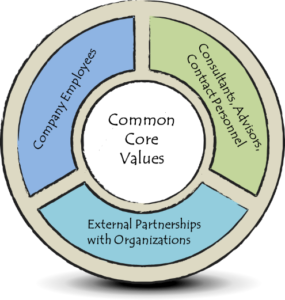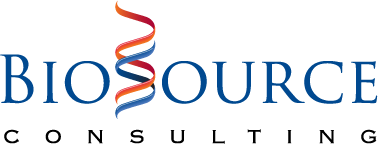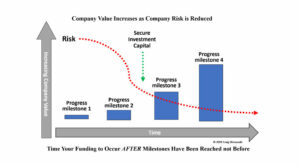This is the fourth in a series of seven common entrepreneurial mistakes, and how to fix them.
Although the context will be biotech entrepreneurs, these principles apply to all entrepreneurs.
A fourth common mistake of entrepreneurs is that they have untapped and unrecognized human resources that are not fully leveraged to help them accomplish their goals.
fourth common mistake of entrepreneurs is that they have untapped and unrecognized human resources that are not fully leveraged to help them accomplish their goals.
The challenge for early-stage companies is that cash is sparse and they are unable to hire a full team of individuals having all the requisite skills to accomplish everything they need. Early-stage companies generally have goals larger than the human resources they possess to achieve them. The irony is that these companies may possess the most innovative product concepts, but they don’t possess the necessary resources that established companies possess. Because of this dilemma, it is critical to recognize and utilize untapped human resources.
How to Avoid this Mistake?
Without question, one critical success factor for all entrepreneurial organizations is the quality and breadth of the team, all working together seamlessly toward the same goal. Your collective team is referred to as your “Human Capital.” Unfortunately, human capital is usually thought of as your full-time employees. However, I encourage you to realize that your human capital is much broader, and really includes the following three components:
- Full-time Company Employees
- Consultants, Advisors and Contract Individuals
- Partnerships with Companies and Organizations
The individuals that comprise each category should be selected based upon their expertise, ability to meet your needs, and more importantly, that they all share the same core values of your organization.
 Capitalizing on Your Expanded Human Capital
Capitalizing on Your Expanded Human Capital
We will omit discussion of the first category “Full-time Company Employees,” as this is self-explanatory, however, how to select these individuals are worth reviewing in the following blog “What Early-Stage Companies should look for in Employees.”
Human Capital: Consultants, Advisors and Contract Individuals
This second human capital component includes all external individuals with specialized knowledge and expertise your full-time employees do not possess. These include more people than you may initially realize: your corporate attorney, patent attorney, board members, scientific and clinical advisory members, business and technical advisors, mentors, technical and regulatory consultants, angel investors, supportive civic leaders, your legislators and others who are supportive of your organization and its mission.
Although you will likely interact with these individuals less frequently than your full-time employees, you should treat them, and communicate with them, as important members of your integrated team. These relationships should be established on a common set of goals, mutual benefit and especially, common core values. You should keep these individuals updated on the progress and milestones of your company, as they can better assist you if they know your company’s issues, or alternatively they can detract from your progress. Building these types of relationships can provide valuable learning and informal mentorship opportunities. Be willing to ask difficult questions and do not be afraid of candid feedback.
As another example, angel investors are typically viewed as a source of money but never forget they also have achieved success in business and can be called upon for help and advice with issues that you may not have faced before. Leverage the knowledge of these advisors knowing they have a vested interest in your company’s success.
Board members also fall into the category. The appointment of board members typically falls to individuals who have financed your company. Therefore, always choose financial partners who share your company’s vision and your core values. All cash from investors spends the same but recognize that when you accept equity capital, you are entering into a formal agreement with the investor’s values or the institutional philosophy from which the cash comes. Board members are a key component of your human capital and, when properly selected, provide a valuable resource of expertise, contacts and advice to help you reach your company goals.
As an entrepreneur, I have had the privilege of working with many great investors. They have provided valuable advice in sales and marketing, financial matters, regulatory and business counsel, and even moral support. Be sure to include them in your business decisions and you will find a willing group of individuals who can help advise you, as well as introduce you to others in their network who can provide valuable resources.
Human Capital: Partnerships with Companies and Organizations
This third component of human capital includes all the “outsourcing” organizations of activities you do not perform internally, or cannot perform as well as them. For instance, most development-stage companies do not have an HR department and do not keep up with employment law requirements. Partnering with a good PEO (Professional Employer Organization) leverages expertise for all the HR and payroll functions without having this burden on the entrepreneurial organization. CROs (Contract Research Organizations) are utilized by development-stage biotechnology companies, and early-stage companies should outsource all activities that are not core to their expertise. This allows them to extend their time horizon to reach critical product development milestones. The key factor is to view these organizations as an integral part of your team. If you select these organizations as you would any employee, and work with them as such, you establish a trust relationship with them. As a result, when unexpected things happen (and they do), these organizations will respond and assist in ways to result in your company’s benefit.
This human capital component also includes all organizations you work with that has overlapping interests. These are usually collaborations where each receives a different benefit by working together. In fact, these types of mutual relationships can provide external validation of your company’s value, or they even may result in future investments in your organization, or possibly a future acquisition partner.
Summary
Entrepreneurs and development-stage companies must perform many activities in which they are not experts. These activities include everything from building a website or putting out press releases, to managing your financing and ensuring scientific progress of your product. However, the number of activities consuming an entrepreneur’s attention increases exponentially as the company grows, making it harder for them to wear many hats successfully. Seek talented individuals and partnerships outside your organization who can perform functions beyond your realm of expertise.
I’m often reminded of a saying: “At some point in your career, your success will no longer depend solely on what you accomplish alone but by what you accomplish with and through the help of others.” I can safely say that I have never encountered a development-stage company that claimed to have all the human resources they needed. Therefore, it is critical to identify and leverage the right human capital resources that no company can do without. These external individuals are people whom you have chosen to rely upon for certain functional aspects of your business – or for business advice and help – who are an addition to your full-time employees.
Successful entrepreneurs strategically leverage all their human resources as integrated components of their human capital and overall company strategy. Carefully select these individuals and they will provide valuable advice, assistance, network contacts and mentorship to ensure you can overcome the challenges you will face as a growing company. More examples of board, scientific advisors, consultants and mentors are discussed in the book Biotechnology Entrepreneurship: Starting, Managing and Leading Biotech Companies.
© 2016 Craig Shimasaki







